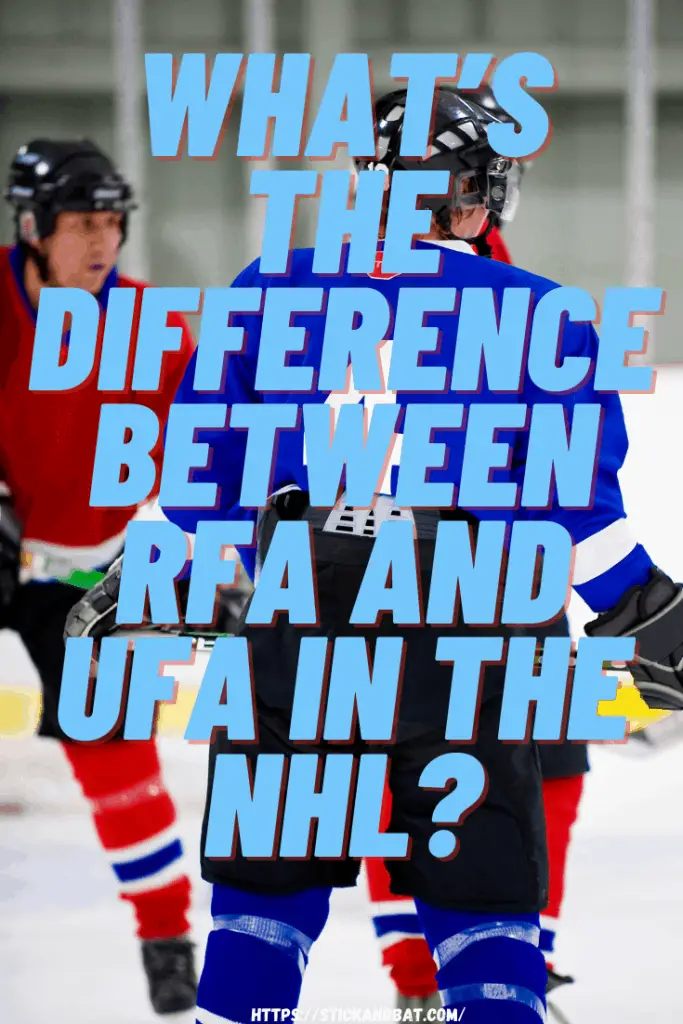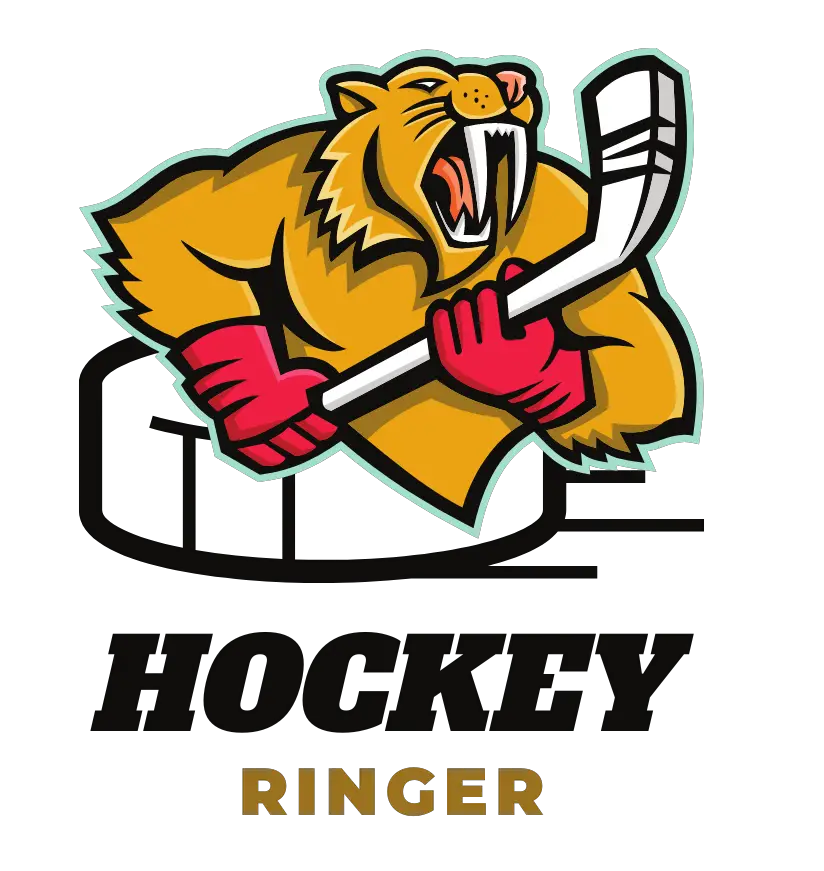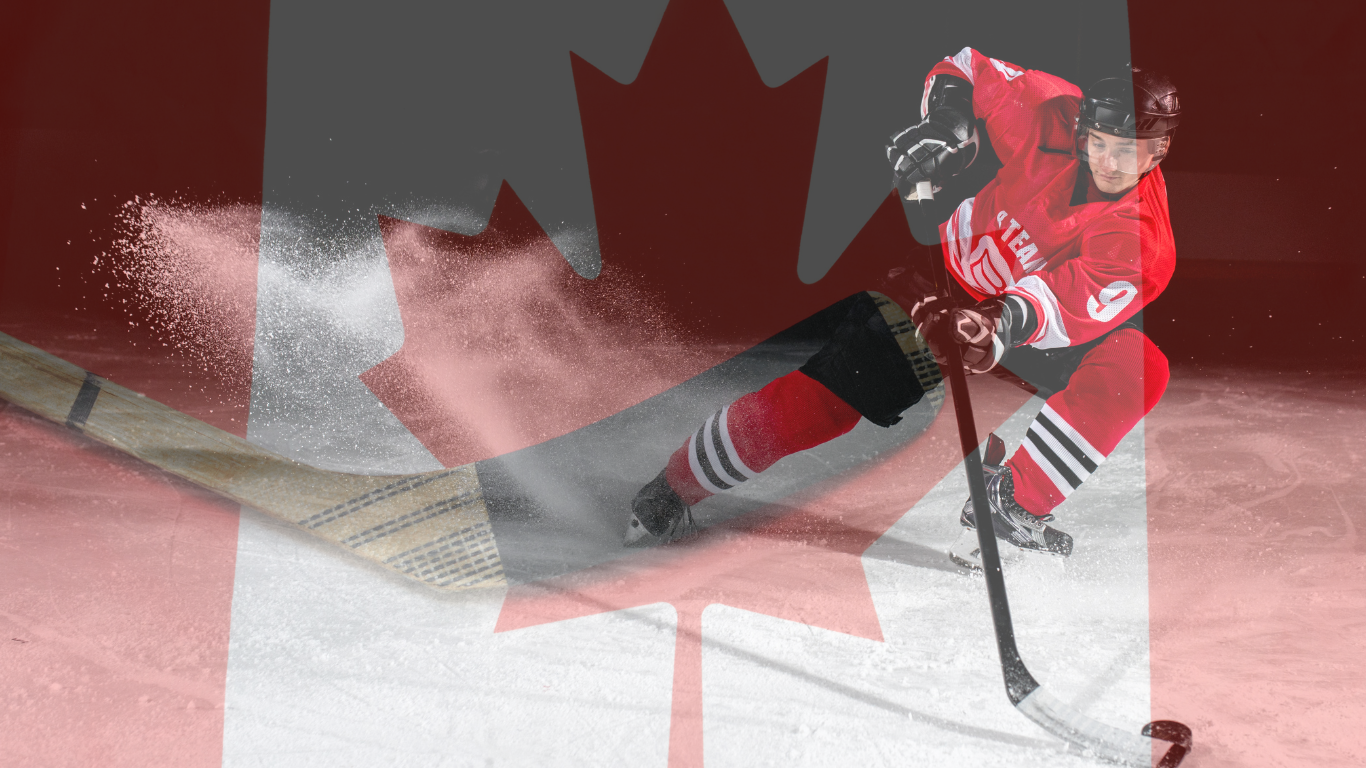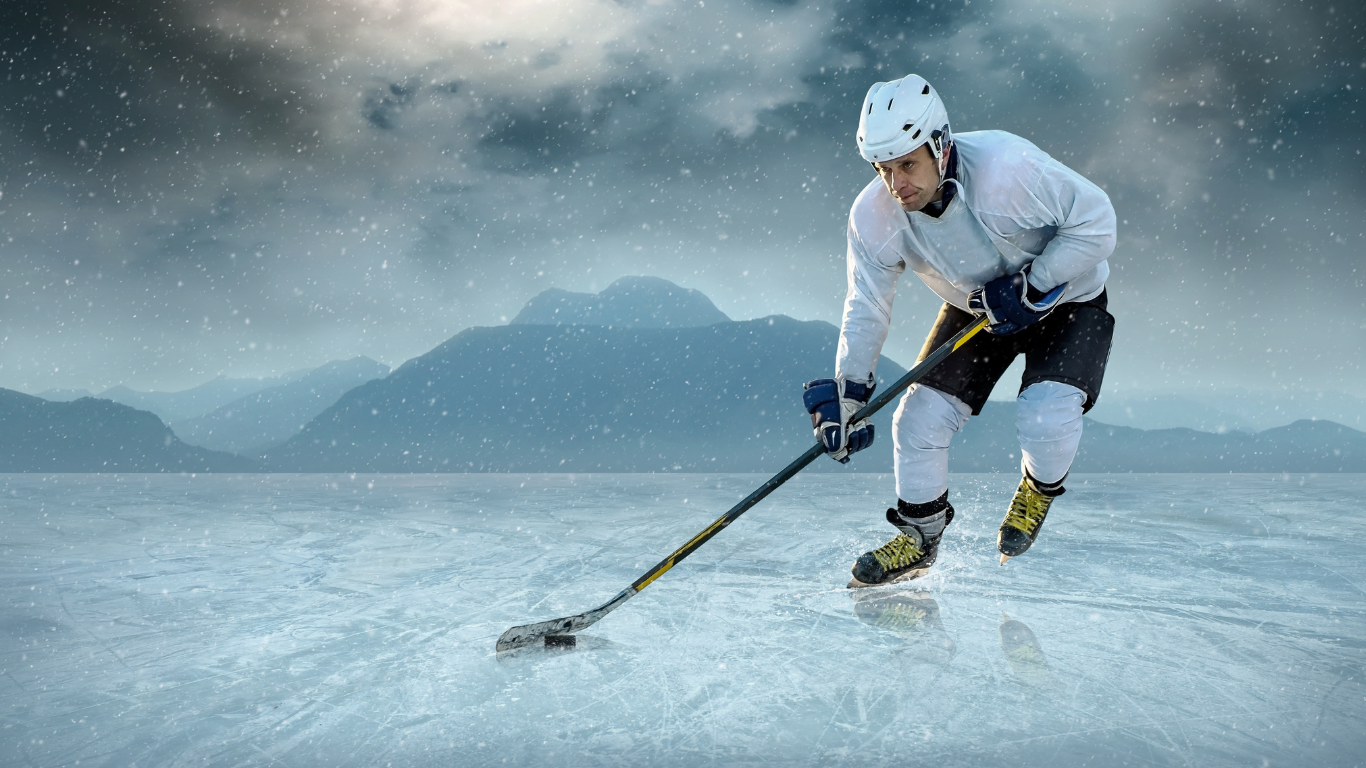In the National Hockey League (NHL) you have two specific kinds of free agents:
- Restricted Free Agents (RFAs), technically free agents that can receive offer contracts from teams throughout the league that can then be matched by the team their “player rights” are held by
- Unrestricted Free Agents (UFAs) that are under absolutely no team control and can dictate their destiny in the league, picking and choosing which teams they want to play for and what contract terms that they are going to play under
Unfortunately, for one reason or another, a lot of the hockey press likes to refer to free agents of every variety simply as “free agents” – not often digging deeper into whether or not a particular player is an RFA or a UFA (or highlighting why that really matters).
In the rest of this detailed guide, though, we are going to cover (almost) everything you need to know about these kinds of free agents, their similarities and how they differ, and a lot of extra specifics about these players in the NHL, too.
Let’s jump right in!
Breaking Down Unrestricted Free Agents (UFAs) in the NHL
To put it bluntly, Unrestricted Free Agents are the “ultimate free agent” and then they have total control over where they are going to play next and how much they are going to play for – at least on the player side of things, anyway.
Obviously, NHL teams have to extend offers to these UFAs for them to continue their career in the league, but they have a lot more freedom when it comes to the decision-making process than RFAs will have.
At the same time, not all UFAs are equal in the NHL, either.
There are subgroups of UFA that need to be understood, groups that determine and dictate exactly how much freedom these players have (as well as what kinds of contracts they are most likely to sign moving forward).
Let’s break that down a little deeper right now.

UFA Groups in the NHL
Group 3
These UFA players are the most common in the NHL, making up the bulk of UFA options available during the off-season – and generally making up a significant portion of the moves that different General Managers make when looking to shore up there NHL team.
These UFA players are going to have at least seven years of “accrued service” in the league already at the time that their contract ends, or they are going to be 27 years of age or older by the time June 30 of that year rolls around.
Group 6
These UFA players are often even more sought after than the Group 3 players, mostly because they are at least 25 years of age, have at least three years of professional service under their belt, and have played at least 80 NHL games (or 28 NHL games if they are a goalie).
The reason these players are so sought after is because they are younger but do not have RFA status attached, giving more teams an opportunity to sign them out right rather than having to worry about qualifying offers or offer sheets (something we’ll get into a little more in depth in just a moment).
Non-Qualified RFAs
In the event that a traditional Restricted Free Agent has not received a Qualifying Offer by the team that outright owns their player rights by the time June 25 rolls around, at 5 PM Eastern Standard Time that day they officially become UFA status and can sign with any team they want to starting on July 1.
Undrafted UFAs
Players that have not been drafted, as well as players that are no longer eligible for the NHL Entry Draft, immediately become a UFA and can sign with any team of their choosing. These players are also not beholden to the entry-level contract rules that drafted players have to abide by.
Breaking Down Restricted Free Agents (RFAs) in the NHL
Restricted Free Agents (RFAs) are generally players that are still very young, having just come off of their very first contract – known in the NHL as the Entry Level Contract (or ELC) – and are amongst some of the most prized assets in the league, particularly by General Managers looking to build teams from free agency.
At the same time, because these free agents are so valued that they are also the most protected by the NHL player transfer rules.
These players are restricted in how they can move throughout the free agency process, with their rights retained by the team that drafted them (or by the team that they signed their ELC with). This gives that team the opportunity to extend Qualifying Offers or to match any Offer Sheet extended to that free-agent in an effort to keep them on the team.
RFA Groups
The Restricted Free Agent player pool is always pretty crowded, which is why the NHL has broken it down into multiple groups just the same way that they have with UFA status players.
All of the players that fall into the RFA player pool are going to be players that can no longer be considered “entry-level”, but also aren’t able to qualify for totally unrestricted free agency when their contract expires, either.
18-21 (3 Years of Experience)
This is the first group of RFA player, players that are especially young and players that have already built up a considerable amount of experience in the NHL.
These are usually players on their way to achieve superstar status, and players that teams are (understandably) eager about re-signing or signing and trading to recoup assets if they don’t have room under their cap to keep them.
22-23 (Two Years of Experience)
Another group of incredibly valuable free agents, these are players that took a little bit longer in the development leagues (the minor league NHL circuit) to reach the NFL but have already built up at least two years of experience.
24 or Older (One Year of Experience)
These players took a little bit longer to mature and finally reached the NHL, but they have one year of experience under their belt before their ELC expired. That gives the team that developed them a chance to keep them in the organization.
How is Professional Experience Rated?
Professional Experience (as defined by the NHL) for players between the ages of 18 and 19 years old triggers when at least 10 games have been played.
For players older than 19, though, the year of Professional Experience is earned when they play 10 or more games at any of the professional levels – including the NHL, the AHL, the ECHL, and the Euro leagues.
RFAs and Qualifying Offers
As highlighted above, qualifying offers can be extended by teams that retain the rights of their RFAs once their contracts expire.
Teams in the NHL do have to make this offer following the NHL draft (June 29) for them to be official, and without these offers being extended RFAs immediately turn into UFAs and have a lot more freedom to move throughout the free agency process.
A Qualifying Offer has to include at least one year and 100% of the previous salary that they made (though offers can obviously go even higher than that).
Do RFAs Have to Sign with the Team That Has Their Rights?
Because the NHL player transaction rules are pretty concrete and well-established, RFA players do not have a whole bunch of opportunities for options to continue playing in the NHL without signing that Qualifying Offer (should it be extended).
Sit Out
One option for players is to simply sit out the year, not play, and (obviously) not make any money whatsoever. If that player continues to sit out by the time December 1 rolls around they will be UFA status the next time that the league opens for business (the following July 1) – but they will have lost a whole year of service and a whole year of pay.
Not a lot of NHL players go down this road.
Play Overseas
Secondly, NHL players could choose to sit out the NHL season by not signing their Qualifying Offer and instead play overseas.
There are quite a few European leagues that do not have ties or relationships with the NHL, that except NHL players looking to basically become “professional hockey refugees” – even though the pay and the conditions (not to mention the competition and coaching) is significantly lower quality across the board.
Still, that’s a much better option than sitting a year and collecting rust – especially as a younger player.
Sign with Someone Else
Finally, RFA status players can sign contracts with other teams if they extend them and offer sheet and the team that owns their rights does not decide to match that offer and keep them for those same contract terms.
Offer Sheets are incredibly rare in the NHL, but they do pop up every now and again.
What About Offer Sheets for RFAs?
Offer Sheets can be extended to RFA status players, but it really doesn’t happen all that often simply because the overwhelming majority of these Offer Sheets are simply meant by the team that owns the rights to that player in the first place.
This boils down to outside teams having to negotiate against themselves, knowing the entire time that if they offer a fantastic contract to a player (or even just a fair contract) the odds are good that the team retaining those rights to the RFA will just match the sheet and keep the player.
If, on the other hand, and outside team offers a huge contract or super favorable terms to a player that they know the original team will not match they likely have to overpay in a bunch of different ways – and that can come back to handicap a team big time, too.
What’s the Compensation for Offer Sheets Not Matched?
Let’s say, just for the sake of argument, that a player with RFA status was extended an Offer Sheet from a different team and that the original team that retained their rights decided for one reason or another not to match it.
Then there is a complex compensation matrix that gets run by the folks at the NHL Administrative Office to determine what other compensation needs to kick in to make up for the original team “losing” a player that had RFA status for them.
- If a new contract has a total salary value of under $1.395 million then there’s going to be no real compensation going back to the original team, even after the player moves on.
- If salary is totalled up at between $1.395 million and $2.113 million then a single third round pick goes from the new team to the old team as compensation.
- If the new salary value is between $2.113 million and $4.227 million, a single second round pick is going to change hands.
- Between $4.227 million and $6.341 million a single first-round pick and a single third round pick are going to be transferred with the player.
- If that total salary is between $8.454 million and $10.568 million then a single first-round pick, a single second round pick, and a single third round pick will be the compensation for the Offer Sheet.
- Any player that signs for a grand total of more than $10.568 million on an Offer Sheet are going to trigger a transfer of four first-round picks that move from the new team to the original rights team.
As you can see, not only do new teams have to pony up quite a bit of money to “steal” RFA players from the team that maintains their rights. They also have to give up a lot of draft capital, too.
How Does Salary Arbitration Work?
RFA status players do have a little bit of leverage available to them, though, so long as they have at least four years of NHL experience under their belts by the time they hit RFA free agency.
In these situations, players can request salary arbitration.
This basically means that a team and a player cannot come to an agreement as far as an independently negotiated salary and contract is concerned, so a third-party (an independent an impartial third party) is brought into the mix to arbitrate things and make a final decision.
The player and the team have the ability to continue negotiating all the way up to the point that the arbitration official hands down a decision, which usually puts a little bit of extra pressure on teams that don’t want to bring their salary offers up to do exactly that.
Once an arbiter makes a final decision, though, that is set in stone. The only options left are for a team to agree to the terms handed down or walk away completely, turning that player into a UFA.
Can You Sign and Trade RFAs?
Sign and Trade deals are a lot more common in the NBA than they are in the NHL, but they do happen every now and again with RFA status players.
The idea here is that a team negotiates with a free-agent they want to add to their team and offers the team that owns their player rights some sort of compensation in exchange for avoiding the whole Offer Sheet experience.
The team getting the RFA is able to save a bit of draft capital (hugely important in today’s NHL) and lockup a player they wanted at contracts that are favorable to them while the team that is technically losing the RFA gets valuable assets of their choice – usually NHL ready assets – back in return.
It’s a win-win across the board!




